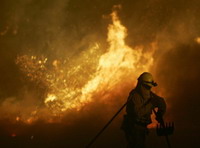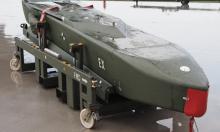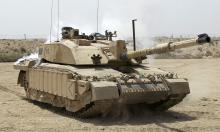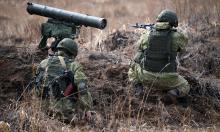Wildfires in Southern California make Bush sign major disaster declaration
The wildfires in Southern California took $1 billion (700 million EUR) in damages in San Diego County alone.

The fires, now in their fourth day, have destroyed 1,500 homes and caused at least a half-million people to flee _ the largest evacuation in state history. At least 1,200 of the damaged homes were in San Diego County, and officials believe that number will rise.
"Clearly, this is going to be a $1 billion or more disaster," Ron Lane, San Diego County's director of emergency services, told reporters during a news conference.
The announcement of San Diego's staggering losses came as President George W. Bush signed a major disaster declaration for California in the wake of wildfires wildfires that have charred about 426,000 acres (172,400 hectares). The president was scheduled to travel to California on Thursday.
The declaration puts in motion long-term federal recovery programs to help state and local governments, families, individuals and certain nonprofit organizations recover.
"Americans all across this land care deeply about them," Bush said after a Cabinet meeting convened to coordinate federal relief efforts. "We're concerned about their safety. We're concerned about their property."
The fierce Santa Ana wind that has stoked the explosive blazes had started to moderate slightly across the region Wednesday although stiff gusts continued to blow through some canyon areas. Forecasters said the wind eventually would be followed by cooling sea breezes.
Wind was reported blowing at a sustained speed of 21 to 36 mph (34 to 58 kilometer) in some areas Wednesday, considerably less than the gusts of up to 100 mph (160 kph) earlier in the week.
The shift could allow for a greater aerial assault and help firefighters beat back the most destructive blazes, said Homeland Security Secretary Michael Chertoff.
An unmanned NASA aircraft outfitted with high-tech imaging equipment took off Wednesday from Edwards Air Force Base on Wednesday for a 10-hour flight to help firefighters locate hot spots. Pilots at NASA Dryden Flight Research Center were remotely controlling the aircraft, outfitted with a thermal-infrared imaging system capable of seeing through thick smoke.
Crews were also anticipating an injection of additional firefighters and equipment from other states, mostly throughout the West. Frustration over the firefighting effort began to emerge Tuesday when a fire official said not enough had been done to protect homes.
Orange County Fire Chief Chip Prather told reporters that firefighters' lives were threatened because too few crews were on the ground. He said a quick deployment of aircraft could have corralled a massive blaze near Irvine.
"It is an absolute fact: Had we had more air resources, we would have been able to control this fire," he said.
Twenty-one firefighters and at least 24 others have been injured. One person was killed by the flames, and the San Diego medical examiner's officer listed five other deaths as connected to the blazes.
The state's top firefighter said Prather misstated the availability of firefighters and equipment. Eight of the state's nine water-dumping helicopters were in Southern California by Sunday, when the first fires began, along with 13 air tankers, said Ruben Grijalva, director of the California Department of Forestry and Fire Protection.
Grijalva said the fires would have overwhelmed most efforts to fight them.
California Governor Arnold Schwarzenegger dismissed the criticism when questioned by an ABC News reporter, and praised the rapid deployment of fire crews and equipment across a region from north of Los Angeles to the Mexican border.
"Anyone that is complaining about the planes just wants to complain because there's a bunch of nonsense," he said. "The fact is that we could have all the planes in the world here - we have 90 aircraft here and six that we got especially from the federal government - and they can't fly because of the wind situation."
Thousands of people packed emergency shelters, where many had an agonizing wait to find out whether their homes had survived.
More evacuation orders were issued Wednesday. The fire also closed Interstate 5 and the Metrolink commuter rail, snagging the morning commute.
However, residents were allowed to return to some areas of San Diego County including Carlsbad, Chula Vista, Del Mar, Encinitas and Solana Beach.
"There are some hot spots and issues there, but we wouldn't be letting people go back if it weren't safe," county spokeswoman Lesley Kirk said.
The city of San Diego was assessing whether to allow people to return to their homes in Rancho Bernardo, one of the hardest-hit areas, Mayor Jerry Sanders said.
California authorities and FBI agents searched a home in Orange County on Wednesday as part of an arson investigation into one of the wildfires, a law enforcement official said, speaking on condition of anonymity because the investigation was continuing.
"FBI Los Angeles is assisting Orange County fire officials and sheriff's office in an ongoing investigation into the source of some of the fires," FBI spokesman Richard Kolko said. He referred all other questions to local authorities.
A man accused of setting a small brush fire in a rural area of the San Bernardino Mountains was booked for investigation of arson. However, San Bernardino County sheriff's spokeswoman Cindy Beavers said authorities do not know if he is connected to any of the region's wildfires.
So far, the fires have inflicted the worst damage in San Diego County, where five blazes continued to burn. The largest fire had charred 196,420 acres (79,490 hectares)- about 300 square miles (777 sq. kilometers) from Witch Creek to Rancho Santa Fe, destroying 650 homes, businesses and other buildings. Other hard-hit areas included San Bernardino County, where hundreds of homes burned in the mountain resort communities near Lake Arrowhead.
Subscribe to Pravda.Ru Telegram channel, Facebook, RSS!





